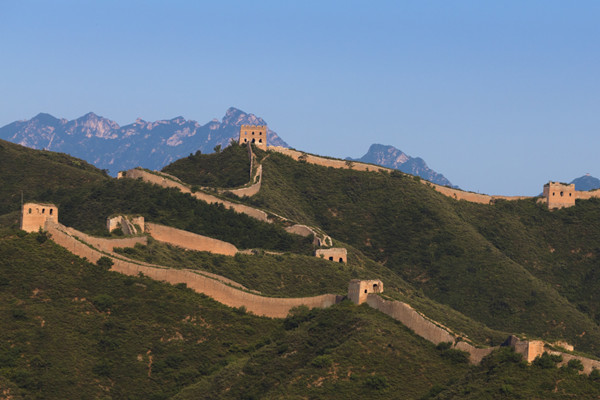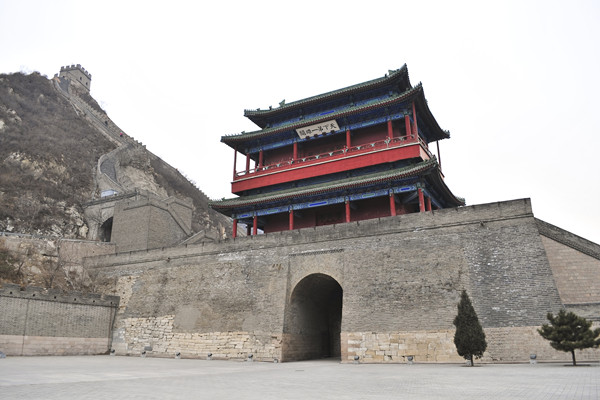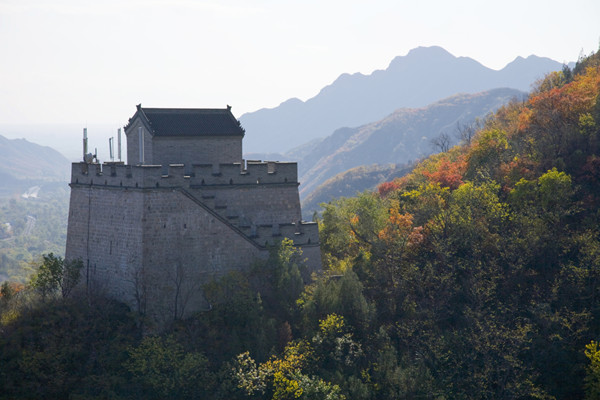Juyongguan Great Wall


[Photo/VCG]
About 60 kilometers (37.3 miles) from downtown Beijing, visitors can easily view the Juyongguan Great Wall in the northwest of Changping District. Meandering along the precipitous mountains, the Juyongguan Great Wall was first built in the Ming Dynasty (1368-1644). It was constructed in various shapes, the most famous of which resembles a human, '人'.
Connected with the Badaling Great Wall to the north, this section features the grand Juyongguan Pass. The Juyongguan Pass is situated in the middle of a long valley and has a girth of over 4,000 meters (4,374.4 yards). With mountains as its east and west walls, the pass played a strategic defense role in ancient times. As early as the Jin Dynasty (1115-1234), it was famous for the verdant trees and blossoming flowers that graced its line of mountains. The Juyongguan pass has two gates: one in the south face and the other in the north face. To defend it, a round courtyard was built outside the south gate. An ancient-style street inside the pass makes visitors feel that they are back in ancient China.

[Photo/VCG]
The Yuntai (Cloud Platform), located in the center of the pass, is actually the white marble foundation of three white pagodas. Unfortunately, the pagodas were ruined at the end of the Yuan Dynasty (1271-1368), leaving only the rectangular foundation intact. It is 9.5 meters high (31.2 feet) and has a south-to-north arch. Well-known stone carvings perch on its walls and roof.
The roof is covered with the patterns of stramonium and five Buddha figures. On the walls, ten lifelike, large figures of Buddha are surrounded by many small ones as well as patterns of flowers. The Four Heavenly Kings (four gods in Chinese legend who guard the country in four directions) are also engraved here. Around them, words praising the construction of the pagodas and the Mantras of the Dharani Sutra are carved in six languages, including Sanskrit and Tibetan. Owing to its historical value and elegant crafting, the Yuntai was included on the list of World Cultural Heritages in 1987.

[Photo/VCG]
Peach blossoms in spring, and maple leaves in autumn, make the Juyongguan Great Wall more enchanting. A visit to this area gives visitors a different perspective than those gained at other sections of the Great Wall.







